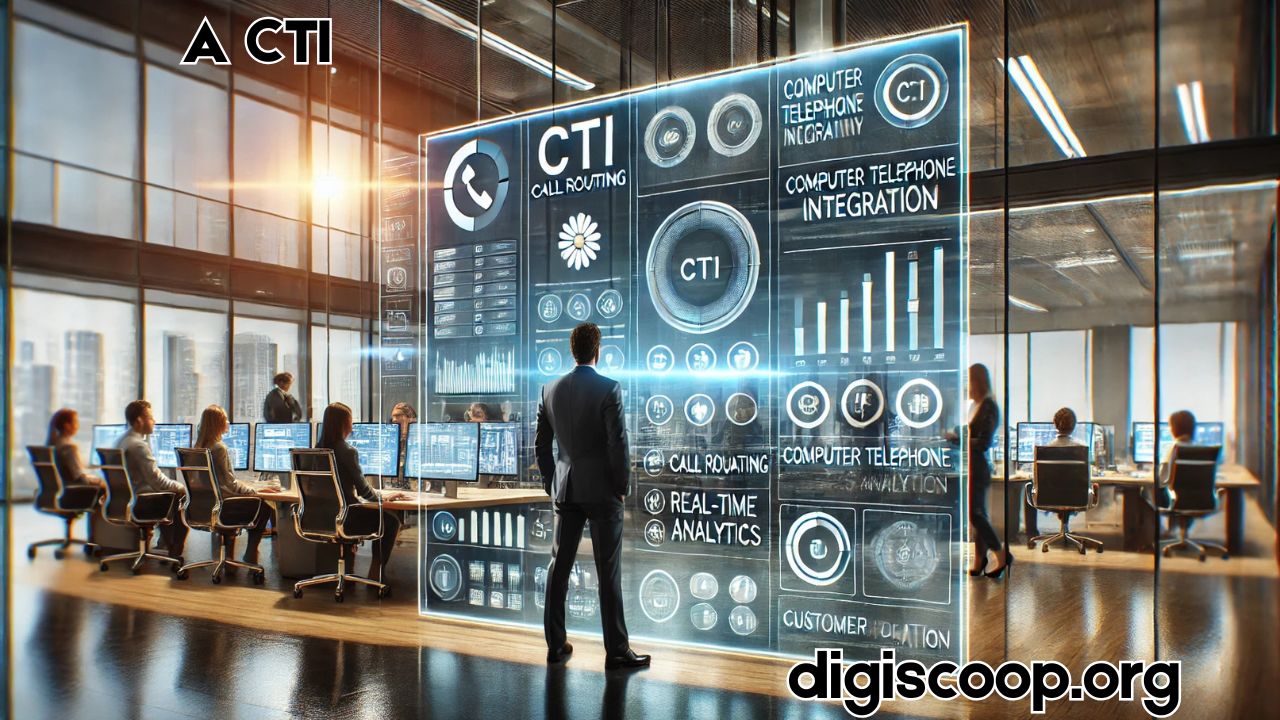Understanding the Foundation of A CTI
A CTI, also known in many contexts as a Computer Telephony Integration system, represents a crucial intersection between telecommunications and information technology. It is a framework that allows computers to manage telephone calls and related functions, providing seamless communication between people and systems. The concept of A CTI has been around for decades, but its role has expanded dramatically with advancements in digital communication. From the outset, A CTI was designed to streamline business operations, enhance customer interactions, and provide organizations with intelligent ways to manage communication infrastructure.
The Technological Evolution of A CTI

The progression of A CTI has mirrored the evolution of the broader tech industry. What began as basic telephone control software has transformed into comprehensive communication ecosystems. Modern A CTI platforms now incorporate features such as voice recognition, automatic call distribution, real-time analytics, and CRM integration. This evolution has been driven by the need for faster, smarter, and more personalized communication. A CTI today is no longer just a technical backend; it is a core part of customer engagement strategies, decision-making processes, and operational efficiency.
Business Applications and Industry Impact
A CTI has become a cornerstone in multiple industries, including finance, healthcare, retail, and customer service. Its ability to bridge voice and data technologies enables companies to enhance both internal and external communication. For example, in customer service, A CTI allows representatives to see caller information instantly, reducing wait times and improving problem resolution. In the healthcare sector, it facilitates secure communication between providers and patients. The adaptability of A CTI across different industries showcases its value as a versatile tool that supports operational excellence and client satisfaction.
Integration with Digital Systems and Platforms
One of the greatest strengths of A CTI lies in its capacity for integration. Modern businesses use a wide range of software tools—CRMs, ticketing systems, ERPs, and data warehouses. A CTI serves as a central connector that allows these tools to work together. This level of integration simplifies workflows, eliminates redundant tasks, and ensures that communication records are accurately maintained. With cloud-based deployment and API support, A CTI can be customized for unique organizational needs, reinforcing its position as a strategic enabler in digital transformation initiatives.
Enhancing Customer Experience Through A CTI
Customer experience is a primary driver behind the growing adoption of A CTI solutions. Customers expect prompt, informed, and empathetic service, and A CTI helps deliver that by arming agents with real-time data and context. Calls are routed to the right departments, agents are prepared before picking up the phone, and follow-up tasks are automatically generated. These features reduce friction and increase the likelihood of positive customer outcomes. A CTI does more than support communication—it elevates the entire customer journey.
Operational Efficiency and Cost Reduction
For businesses looking to improve efficiency, A CTI is a powerful asset. By automating repetitive tasks and simplifying complex processes, it reduces the burden on human resources. Agents can handle more calls, managers gain visibility through analytics, and IT departments spend less time managing separate systems. These benefits translate into significant cost savings and improved ROI. A CTI enables organizations to scale their communication capabilities without exponentially increasing their infrastructure or personnel expenses.
Security and Compliance in A CTI Systems
In an era where data security and regulatory compliance are paramount, A CTI systems are designed with robust safeguards. Encryption, access control, and audit trails ensure that sensitive communication is protected. This is particularly important in sectors like finance and healthcare, where customer privacy is a legal obligation. A CTI providers frequently update their platforms to meet the latest industry standards and regulations. As a result, A CTI is not just a technical convenience but a critical part of risk management and organizational accountability.
Real-Time Analytics and Decision-Making
Another significant advantage of A CTI is its capacity to provide real-time analytics. Managers can monitor call volume, response times, resolution rates, and agent performance in real time. These insights allow for data-driven decision-making, enabling companies to adapt quickly to changing conditions. Whether it’s identifying training needs, reallocating resources, or evaluating customer satisfaction trends, A CTI empowers organizations to make smarter, faster choices. It turns raw communication data into actionable intelligence.
Training and Workforce Optimization
A CTI also plays an important role in employee training and performance improvement. With call recording, screen monitoring, and performance metrics, supervisors can identify strengths and areas for development. Training programs become more focused and effective when they are based on actual interaction data. Moreover, employees feel more supported when they have access to tools that simplify their work. A CTI contributes to a more confident and capable workforce, which in turn leads to better service and higher morale.
A CTI in Remote and Hybrid Work Environments

With the global shift toward remote and hybrid work models, A CTI has gained even more importance. It enables decentralized teams to operate as effectively as those in centralized call centers. Cloud-based A CTI solutions offer flexibility, scalability, and reliability regardless of location. Employees can access call systems, customer data, and internal tools securely from anywhere. As the future of work continues to evolve, A CTI will remain a key component in maintaining consistent and high-quality communication.
Future Trends and Innovations in A CTI
Looking ahead, A CTI will continue to integrate emerging technologies such as artificial intelligence, machine learning, and natural language processing. These innovations will enhance automation, provide deeper insights, and enable predictive customer service models. Voice assistants, chatbots, and sentiment analysis will become more common within A CTI frameworks. The future of A CTI is not just functional—it is intelligent. Businesses that adopt and evolve with these advancements will have a competitive edge in responsiveness, personalization, and operational agility.
Conclusion: A CTI as a Strategic Communication Engine
A CTI has grown from a niche technical function to a strategic pillar in modern organizations. It brings together communication, data, and people in ways that drive efficiency, enhance customer experiences, and support long-term growth. Its adaptability across industries, seamless integration with existing platforms, and alignment with future trends make it an indispensable tool in the digital age. As communication demands become more complex, the role of A CTI will only become more central. For organizations looking to modernize and excel, investing in A CTI is no longer optional—it is essential.
Also Read : Connor McCullough Teacher, ??, Exploring the Dedicated Journey of Connor McCullough Teacher Northern Ireland







